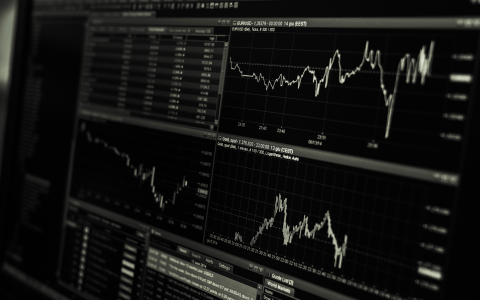
(Bloomberg) - Judging by the ominous pronouncements from Wall Street luminaries, every trader under the sun should be prepping for fresh turmoil in the world’s biggest stock market.
Yet hedging for doom and gloom is falling out of fashion fast, thanks to a historic equity rout that’s already erased $13 trillion in market value this year and flushed out both retail and institutional investors.
In the options marketplace, the relative cost of contracts that pay off if the S&P 500 Index sinks another 10% has collapsed to the lowest since 2017. Appetite for bullish wagers is on the rise. And the popular Cboe Volatility Index is sitting far below multi-year highs even as equity benchmarks plumb bear-market lows.
All that might sound strange given the Federal Reserve is still hellbent on delivering aggressive rate hikes just as recession risk snowballs. But traders are getting tired of reciting the same-old bearish mantras. Equity exposures have already been slashed to historic lows, while elevated inflation and monetary hawkishness are hardly new threats.
“When there is so much skepticism out there, maybe things aren’t actually as bad,” said Gary Bradshaw, a portfolio manager at Hodges Capital Management in Dallas, Texas. “We’re awfully close to having all the headwinds priced in. The narrative is getting repetitive, and traders are slowly getting fed up.”
A sense of exhaustion, a low bar for good news and a higher bar for bad news help explain why the S&P 500’s slow-burn crash appears to be creating fewer day-to-day fireworks. Meanwhile, an impulse to chase potential stock-market gains into a historically strong time of year has been on display of late. During the rare sessions when the S&P 500 actually advanced in October, it posted a 2.4% average gain, a move that’s 1.8 times bigger than the average decline this month. It’s the widest ratio since October 2019, data compiled by Bloomberg show.
That’s not to say traders are bullish. The VIX is still hovering near 30, reflecting expectations that equity prices will swing around more than normal in these uncertain times. Yet given historic inflation and a scary outlook for interest rates, it could be much higher. The thinking goes that cut-to-bone positioning is reducing the need for bearish hedges. The equity exposure of systematic managers, for example, is hovering near lows only seen twice over the past decade -- during the European debt crisis and the March 2020 pandemic rout -- according to Deutsche Bank AG.
With cash on the sidelines, some investors are warming to the idea that most of the bad news is over and favorable seasonal patterns may yet come into play. Since 1990, the three-month period starting on Oct. 10 has brought the S&P 500 a median gain of 7%, data compiled by Bespoke Investment Group show. On a rolling basis, that’s the strongest three-month trading window for the entire year.
“The perception is that while we’re not there yet, maybe we’re a step closer to finding the optimal bottom,” said Steve Sosnick, chief strategist at Interactive Brokers LLC. “We have a healthy package of unknown unknowns, but after a 10-month rout, we could be getting closer to figuring things out.”
All the same, a full-scale economic recession threatens to land next year and the Fed looks powerless to deliver a dovish offset like in previous downturns. That’s why Chris Zaccarelli, chief investment officer at Independent Advisor Alliance, urges caution.
“A lot of people that are trading this market are still using the buy-the-dip playbook,” he said in a phone interview. “It’s worked before, but this is the first time in 40 years when inflation is a significant problem, and things are different.”
For now though, fits of panic are hard to see in the world of options hedging. Take the Cboe Skew Index, which tracks the cost of out-of-the-money S&P 500 options, reflecting demand for tail-risk protection. The gauge fell in six of the past eight weeks to hit the bottom decile of readings going back to early 2010.
Meanwhile, there is little appetite to bet on a higher VIX by buying calls, with the Cboe VVIX Index, a measure of the gauge’s volatility, hovering at muted levels. And more generally demand for bullish S&P 500 contracts is rising relative to downside hedges.
“Client demand is totally focused on right-tail/crash up,” Charlie McElligott at Nomura Securities International Inc. wrote in a note to clients. “They’re terrified about missing the big rally when they don’t own any/enough underlying.”
--With assistance from Justina Lee.
By Elena Popina




